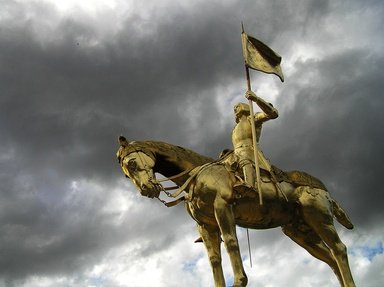Quiz Answer Key and Fun Facts
1. It is customary in the Roman Catholic Church to wait five years after a religious figure dies before beginning the process of canonization. How long did the Church wait before canonizing Joan of Arc?
2. One of the steps in the canonization of any saint is being recognized by the Roman Catholic Church as being "blessed". That means that the Church believes the individual has entered heaven and can intercede on the behalf of people who pray in her name. What is this process called?
3. A special dispensation can be given for one of the four miracles required in order to be blessed by the Roman Catholic Church. Joan of Arc did receive a special dispensation. What did she do to earn it?
4. The other three miracles performed by Joan of Arc which granted her the Church's blessing were similar in nature. What was the nature of the three miracles?
5. Once Joan of Arc received the Church's blessing, two more miracles were needed before her canonization could occur. These miracles had to take place during her lifetime.
6. The second miracle proven to have been performed by Joan of Arc during her canonization proceeding was the healing of an individual diagnosed with "Perforating Plantar Affliction". What was she credited with healing in this case?
7. Charles VII attempted to begin the canonization process for Joan of Arc after she was burned at the stake.
8. Finally, in 1455, a retrial of Joan's case, called the Trial of Rehabilitation, was opened. Who is credited with causing this to happen?
9. Joan of Arc was found innocent during her Trial of Rehabilitation and the tribunal declared her a martyr. At that time the Catholic Church could have immediately declared her a saint.
10. During which period in French history did it become unpopular to think of Joan of Arc as a heroine?
Source: Author
ponycargirl
This quiz was reviewed by FunTrivia editor
looney_tunes before going online.
Any errors found in FunTrivia content are routinely corrected through our feedback system.
